
Qualcomm Snapdragon 778G Benchmark, Test and specs
Last updated:
The Qualcomm Snapdragon 778G has 8 cores with 8 threads and is based on the 4. gen of the Qualcomm Snapdragon series. The processor was released in Q2/2021. The Qualcomm Snapdragon 778G scores 782 points in the Geekbench 5 single-core benchmark. In the Geekbench 5 multi-core benchmark, the result is 2,842 points.

| Name: | Qualcomm Snapdragon 778G |
|---|---|
| Family: | Qualcomm Snapdragon (102) |
| CPU group: | Qualcomm Snapdragon 778 (2) |
| Architecture: | Kryo 670 |
| Segment: | Mobile |
| Generation: | 4 |
| Predecessor: | -- |
| Successor: | -- |
CPU Cores and Base Frequency
The Qualcomm Snapdragon 778G has 8 CPU cores and can calculate 8 threads in parallel. The clock frequency of the Qualcomm Snapdragon 778G is 2.40 GHz. The number of CPU cores greatly affects the speed of the processor and is an important performance indicator.
| CPU Cores / Threads: | 8 / 8 |
|---|---|
| Core architecture: | hybrid (Prime / big.LITTLE) |
| A-Core: | 1x Kryo 670 Prime |
| B-Core: | 3x Kryo 670 Gold |
| C-Core: | 4x Kryo 670 Silver |
| Hyperthreading / SMT: | No |
|---|---|
| Overclocking: | No |
| A-Core Frequency: | 2.40 GHz |
| B-Core Frequency: | 2.20 GHz |
| C-Core Frequency: | 1.90 GHz |
Artificial Intelligence and Machine Learning
Processors with the support of artificial intelligence (AI) and machine learning (ML) can process many calculations, especially audio, image and video processing, much faster than classic processors. Algorithms for ML improve their performance the more data they have collected via software. ML tasks can be processed up to 10,000 times faster than with a classic processor.
| AI hardware: | Qualcomm AI engine |
|---|---|
| AI specifications: | Hexagon 770 @ 12 TOPS |
Internal Graphics
The Qualcomm Snapdragon 778G has integrated graphics, called iGPU for short. Specifically, the Qualcomm Snapdragon 778G uses the Qualcomm Adreno 642L, which has 384 texture shaders and 4 execution units. The iGPU uses the system's main memory as graphics memory and sits on the processor's die.
| GPU name: | Qualcomm Adreno 642L |
|---|---|
| GPU frequency: | |
| GPU (Turbo): | No turbo |
| Compute units: | 4 |
| Shader: | 384 |
| Hardware Raytracing: | No |
| Release date: | Q2/2021 |
| Max. displays: | 1 |
|---|---|
| Generation: | 5 |
| Direct X: | 12.0 |
| Technology: | 6 nm |
| Max. GPU Memory: | 4 GB |
| Frame Generation: | No |
Hardware codec support
A photo or video codec that is accelerated in hardware can greatly accelerate the working speed of a processor and extend the battery life of notebooks or smartphones when playing videos.
| h265 / HEVC (8 bit): | Decode |
|---|---|
| h265 / HEVC (10 bit): | Decode |
| h264: | Decode / Encode |
| VP8: | Decode |
| VP9: | Decode |
| AV1: | No |
|---|---|
| AVC: | Decode |
| VC-1: | Decode |
| JPEG: | Decode / Encode |
Memory & PCIeThe processor can use up to 16 GB memory in 2 (Dual Channel) memory channels. The maximum memory bandwidth is 51.2 GB/s. The memory type as well as the amount of memory can greatly affect the speed of the system. |
|
| Memory type: | Memory bandwidth: |
|---|---|
| LPDDR5-6400 | 51.2 GB/s |
| Max. Memory: | 16 GB |
| Memory channels: | 2 (Dual Channel) |
| ECC: | No |
| PCIe: | |
| PCIe Bandwidth: | -- |
Thermal ManagementThe thermal design power (TDP for short) of the processor is . The TDP specifies the necessary cooling solution that is required to cool the processor sufficiently. The TDP usually gives a rough idea of the actual power consumption of the CPU. |
|
|---|---|
| TDP (PL1 / PBP): | |
| TDP (PL2): | -- |
| TDP up: | -- |
| TDP down: | -- |
| Tjunction max.: | -- |
Technical details
The Qualcomm Snapdragon 778G is made in 6 nm. The smaller the manufacturing process of a CPU, the more modern and energy-efficient it is. Overall, the processor has 2.00 MB cache. A large cache can greatly speed up the processor's speed in some cases such as games.
| Technology: | 6 nm |
|---|---|
| Chip design: | Chiplet |
| Socket: | -- |
| L2-Cache: | -- |
| L3-Cache: | 2.00 MB |
| AES-NI: | No |
| Operating systems: | Android |
| Virtualization: | None |
|---|---|
| Instruction set (ISA): | Armv8-A (64 bit) |
| ISA extensions: | -- |
| Release date: | Q2/2021 |
| Release price: | -- |
| Part Number: | SM7325 |
| Documents: | Technical data sheet |
Rate this processor
Benchmark results

The benchmark results for the Qualcomm Snapdragon 778G have been carefully checked by us. We only publish benchmark results that have been created by us or that have been submitted by a visitor and then checked by a team member. All results are based on and fullfill our benchmark guidelines.
Screenshots:
Screenshots:
Geekbench 5, 64bit (Single-Core)
Geekbench 5 is a cross plattform benchmark that heavily uses the systems memory. A fast memory will push the result a lot. The single-core test only uses one CPU core, the amount of cores or hyperthreading ability doesn't count.

|
AMD EPYC 7251
8C 16T @ 2.90 GHz |
||
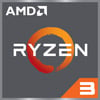
|
AMD Ryzen 3 3200U
2C 4T @ 3.50 GHz |
||

|
AMD Ryzen 3 3250U
2C 4T @ 3.50 GHz |
||
|
|
Qualcomm Snapdragon 778G
8C 8T @ 2.40 GHz |
||

|
Intel Core i7-2700K
4C 8T @ 3.90 GHz |
||

|
Intel Core i5-3550S
4C 4T @ 3.70 GHz |
||
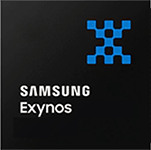
|
Samsung Exynos 1380
8C 8T @ 2.40 GHz |
||
Geekbench 5, 64bit (Multi-Core)
Geekbench 5 is a cross plattform benchmark that heavily uses the systems memory. A fast memory will push the result a lot. The multi-core test involves all CPU cores and taks a big advantage of hyperthreading.
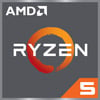
|
AMD Ryzen 5 2400GE
4C 8T @ 3.20 GHz |
||

|
Intel Core i7-3632QM
4C 8T @ 2.20 GHz |
||

|
Intel Core i7-4720HQ
4C 8T @ 3.40 GHz |
||
|
|
Qualcomm Snapdragon 778G
8C 8T @ 2.40 GHz |
||

|
AMD Ryzen 5 3550H
4C 8T @ 3.00 GHz |
||

|
Samsung Exynos 1380
8C 8T @ 2.40 GHz |
||

|
Intel Processor N100
4C 4T @ 3.00 GHz |
||
Geekbench 6 (Single-Core)
Geekbench 6 is a benchmark for modern computers, notebooks and smartphones. What is new is an optimized utilization of newer CPU architectures, e.g. based on the big.LITTLE concept and combining CPU cores of different sizes. The single-core benchmark only evaluates the performance of the fastest CPU core, the number of CPU cores in a processor is irrelevant here.
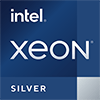
|
Intel Xeon Silver 4116
12C 24T @ 3.00 GHz |
||

|
Intel Core m3-8100Y
2C 4T @ 3.40 GHz |
||
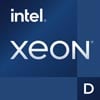
|
Intel Xeon D-2123IT
4C 8T @ 3.00 GHz |
||
|
|
Qualcomm Snapdragon 778G
8C 8T @ 2.40 GHz |
||

|
Qualcomm Snapdragon 780G
8C 8T @ 2.40 GHz |
||

|
Intel Core i7-7Y75
2C 4T @ 3.30 GHz |
||
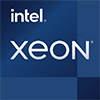
|
Intel Xeon E5-2697A v4
16C 32T @ 3.60 GHz |
||
Geekbench 6 (Multi-Core)
Geekbench 6 is a benchmark for modern computers, notebooks and smartphones. What is new is an optimized utilization of newer CPU architectures, e.g. based on the big.LITTLE concept and combining CPU cores of different sizes. The multi-core benchmark evaluates the performance of all of the processor's CPU cores. Virtual thread improvements such as AMD SMT or Intel's Hyper-Threading have a positive impact on the benchmark result.

|
Intel Pentium Gold 7505
2C 4T @ 3.50 GHz |
||

|
Intel Core i5-4460S
4C 4T @ 3.10 GHz |
||

|
Intel Core i5-4570R
4C 4T @ 2.90 GHz |
||
|
|
Qualcomm Snapdragon 778G
8C 8T @ 2.40 GHz |
||

|
AMD Ryzen 5 3500U
4C 8T @ 3.00 GHz |
||
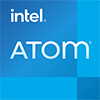
|
Intel Atom x7425E
4C 4T @ 1.50 GHz |
||

|
MediaTek Dimensity 1000L
8C 8T @ 2.20 GHz |
||
AnTuTu 9 Benchmark
The AnTuTu 9 benchmark is very well suited to measuring the performance of a smartphone. AnTuTu 9 is quite heavy on 3D graphics and can now also use the "Metal" graphics interface. In AnTuTu, memory and UX (user experience) are also tested by simulating browser and app usage. AnTuTu version 9 can compare any ARM CPU running on Android or iOS. Devices may not be directly comparable when benchmarked on different operating systems.
In the AnTuTu 9 benchmark, the single-core performance of a processor is only slightly weighted. The rating is made up of the multi-core performance of the processor, the speed of the working memory, and the performance of the internal graphics.
In the AnTuTu 9 benchmark, the single-core performance of a processor is only slightly weighted. The rating is made up of the multi-core performance of the processor, the speed of the working memory, and the performance of the internal graphics.

|
Qualcomm Snapdragon 7 Gen 1
6C 6T @ 2.40 GHz |
||

|
Samsung Exynos 1380
8C 8T @ 2.40 GHz |
||

|
MediaTek Dimensity 7030
8C 8T @ 2.50 GHz |
||
|
|
Qualcomm Snapdragon 778G
8C 8T @ 2.40 GHz |
||

|
Apple A10X Fusion
6C 6T @ 2.36 GHz |
||

|
MediaTek Dimensity 1080
8C 8T @ 2.60 GHz |
||

|
MediaTek Dimensity 820
8C 8T @ 2.60 GHz |
||
AnTuTu 8 Benchmark
The AnTuTu 8 Benchmark measures the performance of a SoC. AnTuTu benchmarks the CPU, GPU, Memory as well as the UX (User Experience) by simulating browser and app usage. AnTuTu can benchmark any ARM CPU that runs under Android or iOS. Devices may not be directly compareable if the benchmark has been performed under different operating systems.
In the AnTuTu 8 benchmark, the single-core performance of a processor is only slightly weighted. The evaluation consists of the multi-core performance of the processor, the speed of the RAM and the performance of the internal graphics.
In the AnTuTu 8 benchmark, the single-core performance of a processor is only slightly weighted. The evaluation consists of the multi-core performance of the processor, the speed of the RAM and the performance of the internal graphics.

|
Qualcomm Snapdragon 865
8C 8T @ 2.84 GHz |
||

|
Qualcomm Snapdragon 860
8C 8T @ 2.96 GHz |
||

|
Apple A13 Bionic
6C 6T @ 2.65 GHz |
||
|
|
Qualcomm Snapdragon 778G
8C 8T @ 2.40 GHz |
||

|
Samsung Exynos 990
8C 8T @ 2.73 GHz |
||

|
Qualcomm Snapdragon 780G
8C 8T @ 2.40 GHz |
||

|
MediaTek Dimensity 1000
8C 8T @ 2.60 GHz |
||
Estimated results for PassMark CPU Mark
Some of the CPUs listed below have been benchmarked by CPU-monkey. However the majority of CPUs have not been tested and the results have been estimated by a CPU-monkey’s secret proprietary formula. As such they do not accurately reflect the actual Passmark CPU mark values and are not endorsed by PassMark Software Pty Ltd.

|
Qualcomm Snapdragon 870
8C 8T @ 3.20 GHz |
||

|
Intel Core i7-3770
4C 8T @ 3.90 GHz |
||

|
Intel Xeon D-1528
6C 12T @ 1.90 GHz |
||
|
|
Qualcomm Snapdragon 778G
8C 8T @ 2.40 GHz |
||

|
Intel Xeon Silver 4112
4C 8T @ 3.00 GHz |
||
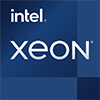
|
Intel Xeon E-2276ML
6C 12T @ 2.00 GHz |
||

|
Intel Xeon E-2254ML
4C 8T @ 2.40 GHz |
||
Performance for Artificial Intelligence (AI) and Machine Learning (ML)
Processors with the support of artificial intelligence (AI) and machine learning (ML) can process many calculations, especially audio, image and video processing, much faster than classic processors. The performance is given in the number (trillions) of arithmetic operations per second (TOPS).

|
Qualcomm Snapdragon 865
8C 8T @ 2.84 GHz |
||

|
Qualcomm Snapdragon 865+
8C 8T @ 3.10 GHz |
||

|
Samsung Exynos 990
8C 8T @ 2.73 GHz |
||
|
|
Qualcomm Snapdragon 778G
8C 8T @ 2.40 GHz |
||

|
Qualcomm Snapdragon 778G+
8C 8T @ 2.50 GHz |
||

|
Qualcomm Snapdragon 780G
8C 8T @ 2.40 GHz |
||

|
Apple M1 (7-GPU)
8C 8T @ 0.60 GHz |
||
Benchmarks

Geekbench 5 (SC)
2,488 entries
2,488 entries

Geekbench 5 (MC)
2,461 entries
2,461 entries

Geekbench 6 (SC)
1,755 entries
1,755 entries

Geekbench 6 (MC)
1,703 entries
1,703 entries

AnTuTu 9 Benchmark
90 entries
90 entries

AnTuTu 8 Benchmark
118 entries
118 entries
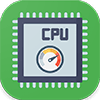
PassMark CPU-Mark
2,392 entries
2,392 entries

AI / ML Performance
119 entries
119 entries
Description of the processor
The Qualcomm Snapdragon 778G is a very common processor that is occasionally installed in tablets, but mainly in mobile phones. Examples of this are the Samsung Galaxy A73 5G, the Xiaomi Civi S1 or the Oppo Reno7 5G. The processor was launched in the second quarter of 2021 and has been used in more and more devices since then. The internal article number of the Qualcomm Snapdragon 778G is SM7325.The processor has 8 cores which are divided into a Prime / big.LITTLE as follows: There is a Prime core of the Kryo 670 Prime type, which clocks at up to 2.40 gigahertz. Then there are 3 big Kryo 670 Gold cores that clock at up to 2.20 gigahertz and the remaining 4 cores are the LITTLE cores that clock at up to 1.90 gigahertz. Hyperthreading and overclocking are not an issue with this type of processor and are also not supported here.
The in-house Qualcomm Adreno 642L GPU is used as the internal graphics unit in the Qualcomm Snapdragon 778G. This graphics unit has 4 execution units with a total of 384 shader units. The graphics unit from the fifth generation of Qualcomm graphics units is manufactured using the 6-nanometer process and is only installed in the Qualcomm Snapdragon 778G and Qualcomm Snapdragon 778G+ processors. Unfortunately, the clock frequency of the graphics unit is not known.
As far as the supported memory is concerned, there is unfortunately not too much information. It is only known that the Qualcomm Snapdragon 778G supports LPDDR5-3200 type RAM and that it has 2 memory channels. Unfortunately, the maximum amount of RAM that can be installed with the Qualcomm Snapdragon 778G is just as little known as the bandwidth.
The entire processor, like the graphics unit, is manufactured using the 6-nanometer process.
Popular comparisons
back to index




